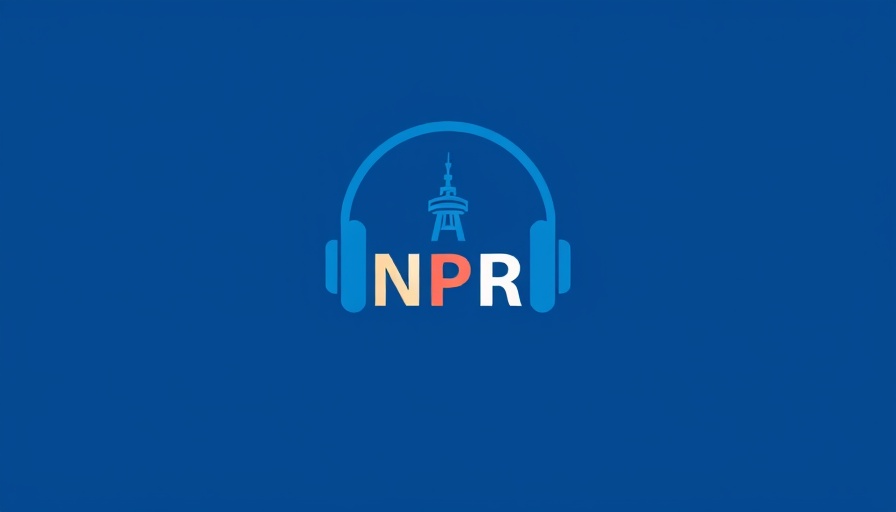
Understanding the Steroid Conversation in Today's Culture
Steroids may have been a topic of discussion for decades, but the narrative surrounding them is evolving rapidly, particularly in the intersection of health, media, and body image. Social media platforms are not only amplifying voices advocating for healthy body images but also fostering discussions that dive deeper into body aesthetics, especially among men. In recent years, a surge of interest regarding pharmaceuticals used for weight loss has led to a broader scrutiny of body image trends, but it is essential to recognize that steroid usage remains prevalent among individuals aiming to bulk up.
Social Media's Role in Body Perception
Social media plays a vital role in shaping perceptions of body image. As Brittany Luse noted in her insights featuring clinical psychologist Dr. Roberto Olivardia, there's a growing wave of content analyzing celebrities' physiques—often leading to speculation about their potential use of steroids. This cultural obsession with appearances, particularly among influencers and sports figures, can skew younger audiences' perceptions, leading to unhealthy comparisons and aspirations.
For young boys, especially those as young as 12, this is of particular concern. Commonly referred to as muscle dysmorphia, the condition is characterized by a distorted body image where individuals believe that they still appear too small, regardless of their actual physical condition. This reflects not only a personal crisis but a societal issue exacerbated by the unrealistic portrayals of strength and masculinity in popular culture.
Development of Muscle Dysmorphia
Muscle dysmorphia is a specific health condition that has garnered attention among mental health professionals as it appears to be on the rise. Dr. Olivardia's research reveals that the issue affects boys at increasingly younger ages. The psychological implications for young men who feel pressured to attain a certain physique can have lasting effects, leading to detrimental health choices, including the use of anabolic steroids.
Parents, guardians, and educators must be aware of this phenomenon and engage in open conversations about body image, emphasizing diverse body types and the importance of mental health. Conversations must address the risks associated with body enhancement drugs and promote healthy lifestyle choices grounded in self-acceptance and fitness.
The Impact of Celebrity Culture on Youth
It's no secret that celebrity culture has far-reaching effects on societal norms and personal aspirations. The striking transformations of male celebrities often lead fans to speculations about whether these changes are the result of rigorous training, special diets, or even the illicit use of steroids. Such narratives create unrealistic standards and can significantly harm impressionable youths' mental well-being.
As observed from platforms like TikTok and Instagram, these body image ideals not only promote a narrow definition of attractiveness but can also incentivize young men to make dangerous choices in pursuit of these distorted ideals. Encouraging young men to engage in physical activity for health rather than appearance and providing them with resources to develop healthy habits is vital.
Future Trends in Body Image Discussions
The conversation around steroid use and body image will likely continue to evolve as we see new trends in fitness and wellness taking the forefront. Awareness campaigns about the implications of body-enhancing drugs have grown, fostering a safer environment for discussions about mental health and body image.
With advancements in understanding the psychological effects of body dysmorphia and its relationship to steroid use, mental health professionals are poised to create more integrative health and wellness programs to help young individuals navigate these challenges. The new era of health promotion emphasizes holistic approaches, empowering individuals to embrace their unique bodies without resorting to harmful substances.
Encouraging Healthy Conversations
Increased awareness and open dialogue about body image, especially among young men, is essential for reshaping narratives. We must champion community health initiatives that promote self-acceptance and recognize the diversity of body types as beautiful. Sharing personal stories, insights from mental health professionals, and facilitating mentorship programs can cultivate a supportive environment for young individuals grappling with these issues.
Encouraging self-love, setting realistic body goals, and building resilience against societal pressures can prepare future generations to define their health and beauty standards on their own terms, rather than through unrealistic portrayals propagated through media and celebrity culture.
Take Control of Your Body Image Journey
As discussions surrounding steroids and body image continue to evolve, it remains vital for both individuals and society to embrace a holistic approach to wellness. By addressing mental health, encouraging physical fitness for joy, and nurturing positive body images, we can collectively foster an environment of support and understanding.
In order to promote awareness, consider engaging in local health events or workshops aimed at building self-esteem and advocating for mental wellness initiatives. It’s not only important to focus on physical health but also to prioritize mental well-being. Take the first step— seek out community forums or health seminars that provide resources for mental health and well-being.
 Add Row
Add Row  Add
Add 




Write A Comment